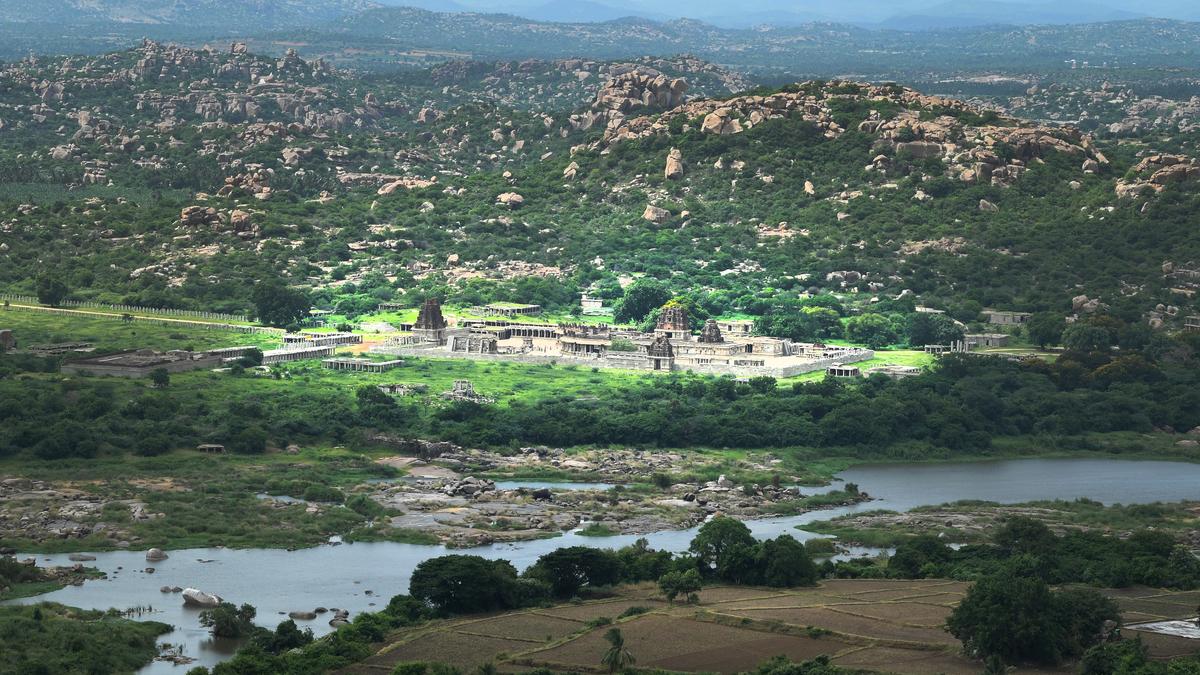
How water flowed into all corners of Hampi Premium
The Hindu
Hampi, the UNESCO-recognised historical site, was the capital of the Vijayanagara empire from 1336 to 1565. Foreign travellers from Persia, Europe and other parts of the world have chronicled the wealth of the place and the unique cultural mores of this kingdom built on the banks of the Tungabhadra river. There are fine descriptions to be found of its temples, farms, markets and trading links, remnants of which one can see in the ruins now. The Literature, architecture of this era continue inspire awe.
Hampi, the UNESCO-recognised historical site, was the capital of the Vijayanagara empire from 1336 to 1565. Foreign travellers from Persia, Europe and other parts of the world have chronicled the wealth of the place and the unique cultural mores of this kingdom built on the banks of the Tungabhadra river. There are fine descriptions to be found of its temples, farms, markets and trading links, remnants of which one can see in the ruins now. The Literature, architecture of this era continue inspire awe.
On a trip to Hampi, while some places like Vijaya Vittala temple or stone chariot remain must-visit places, a more leisurely and closer look at the monuments reveal many facets of this town. For instance, remains that tell the technology used to draw water -- for agriculture, drinking, bathing and so on -- from Tungabhadra and other sources to the city makes for a fascinating study.
Though building anekattu (check dams) started during the Hoysala times, Vijayanagara empire continued this in various places. We find one inscription that states that Bukkaraya, the earliest ruler, had built an anekattu across Penna river. Among the ruins of Hampi one can see canals small and big that brought water to the city. Some of them are still in use.
Water ducts constructed in granite can be seen which provided water to palaces, temples, market places, public bathing areas and so on. There are many pushkaranis (temple ponds), wells and rock-cut tanks built in the city to provide drinking water at various public gathering places. There were water storage places especially for domestic animals, horses, elephants etc. too.
The water supply system gives a traveller insights into the extraordinary city planning that was carried out by the kings, architects and workers of the Vijayanagara empire.











